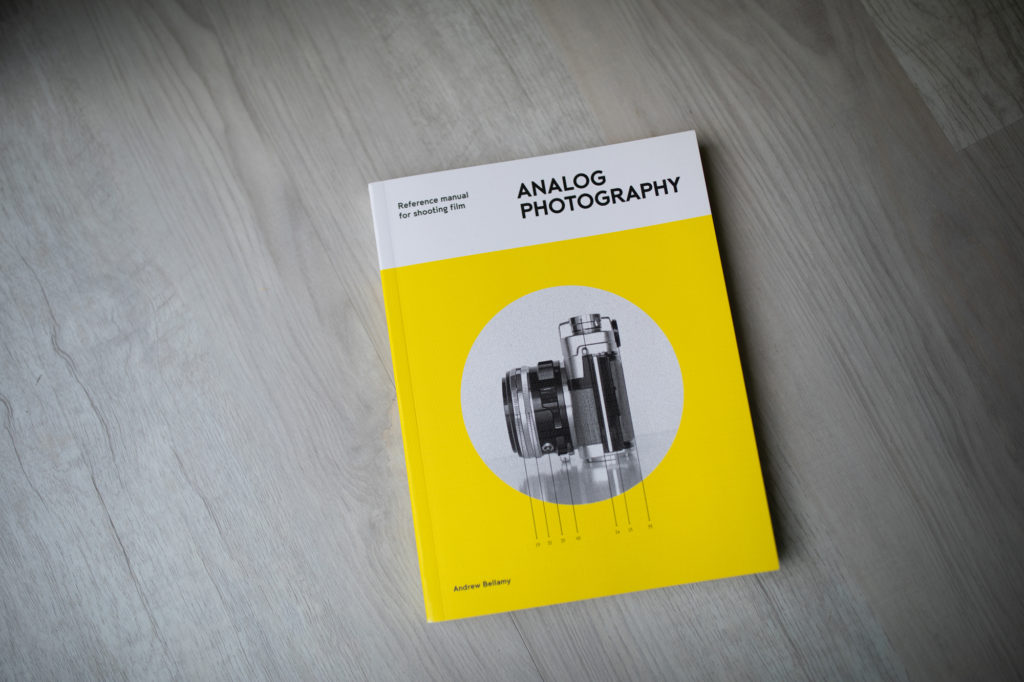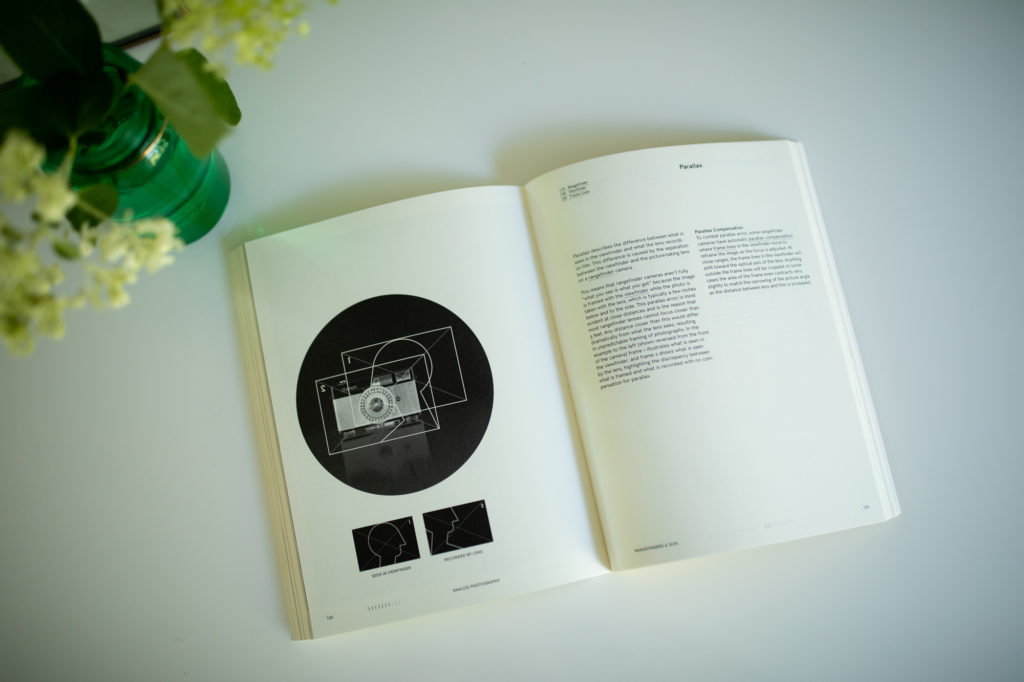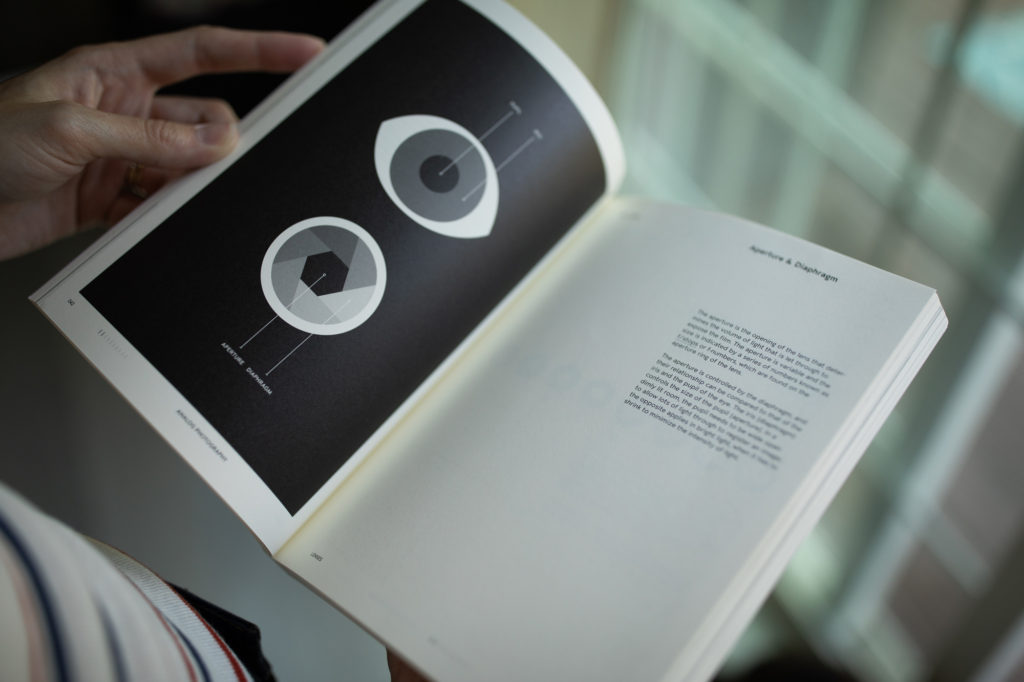Last Updated: February 14th, 2020
Before we begin: please note we received a review copy of this book to check out. Our thoughts remain our own.
Introduction
 In the modern day, the major appeal of film photography is its tactile nature. Unlike modern digital photography where photos are taken, stored on an SD card, then transferred to a computer – all a digital process – film remains compelling because it feels more real.
In the modern day, the major appeal of film photography is its tactile nature. Unlike modern digital photography where photos are taken, stored on an SD card, then transferred to a computer – all a digital process – film remains compelling because it feels more real.
Our personal explorations in photography actually began with film. High school film photography classes exposed us (no pun intended!) to the darkroom. The meticulous nature of producing a great image.
Today, like increasing vinyl record sales and a resurgence of record stores, film photography is making a comeback that is likely being influenced by pop cultures recent obsession with nostalgia. In some cases, actual film & darkroom processes are put on display in movies and TV shows like Stranger Things – which reaches a wide audience.
As time went on, our love for film never subsided – but we saw and appreciated the value of digital photography as well. Our expansion into digital point-and-shoot cameras and ultimately higher quality DSLR’s have been a staple of our photography kit. Yet – if you walk into our home, the cameras you will see adorning our bookshelves are not the cookie cutter digital ones, but all of the unique and visually visceral film cameras.
Film photography is much more of a “photography experience” in that everything from the aesthetic and feel of the cameras to how images are carefully taken, then produced later on. It is an experience that for many has been replaced by the simplicity and instant gratification of digital. We’re not going to argue which is “better” – as that is a pointless discussion.
But, we can say that film photography carries with it a feeling of more authenticity. This is because, rooted in a study and enjoyment of film, you will be met with the history of cameras and photography that’s impossible to separate from it. It’s this cultural heritage photographers share that resonates with us – and of course that experience of developing a roll of film and seeing the result of our efforts, not immediately, but in time.
Analog Photography: Reference Manual for Shooting Film by Andrew Bellamy captures the fundamentals of film photography for those who may have grown up far more exposed to digital photography. It’s also undeniable that older generations needing to be reintroduced to the core concepts in film photography will love this, too.
Some of the content provided covers photography basics that will apply both to film and digital photography. From our read through of the book, we found it to be a very compelling tool for providing education on film photography because of it’s simplicity of writing even when tackling more complex topics like depth of field and exposure values. We also can’t ignore the unique and beautiful graphics, diagrams and examples to come along for the ride.
Content
 Written by Andrew Bellamy, an experienced graphic designer and photographer living in New York, this book covers all of the essentials (and then some) that any photographer would need to know when beginning (or re-beginning) to explore film photography.
Written by Andrew Bellamy, an experienced graphic designer and photographer living in New York, this book covers all of the essentials (and then some) that any photographer would need to know when beginning (or re-beginning) to explore film photography.
The 6 main topics covered in this book include:
- General Nomenclature (a glossary of must know photography terms)
- Lenses
- Speeds & Exposure
- Effects of Aperture & shutter Speed
- Rangefinders & SLRs
- Film & Filters
What impressed us in all of this is just how effective Andrew is at explaining these things in detail, but without making it dry and boring.
Take for example a topic like camera lenses – one that often becomes pretty boring quickly – especially online where bloggers may just be trying to lead the audience to make a purchase (who doesn’t like getting paid?).
In a twist of events, while we’ve always used camera lenses as a means to an end, and maybe had had some aspects of them explained to us in our school days, the detail provided here is enough to intrigue even a more experienced photographer. Explanations of the lens optics in digestible detail provides a valuable foundation of understanding this particular piece of gear which is so critical to the creative process.
Every section of Analog Photography led us through the same experience. It turns out, even as an established photographer, there are still new things to learn. That is maybe the single best part about this read – while it’s crafted for beginner photographers, it has a practical value to experienced photographers, too!
Design
 Remember how we discussed film photography being heavily rooted in the tactile experience?
Remember how we discussed film photography being heavily rooted in the tactile experience?
Paging through Analog Photography: Reference Manual for Shooting Film brings us back to sitting in a library when we were younger to study for our high school classes. In the past few months, our engagement photography work has been leading us back to similar types of settings – libraries, old book stores, coffee shops with book rooms, and the like – and there’s this impactful smell and tactile sensation we associate so strongly with all of those memories and experiences.
The care that went into the design of this book is immediately noticeable.
From the textured cover to all of the graphic details interweaving throughout its pages – it manages to take a subject as simple as an introduction to film photography, on which there already exist many books and resources, and add some personality into the mix.
The design elements stick out for us so heavily because of our own graphic design backgrounds, as well as the simple reality that photography is a visual medium. While the text explanations are valuable in their own right – they would be nothing without the extra illustrations. For someone just beginning to learn about these photography concepts, this is something we consider essential.
Who is this for?
 Analog Photography is a great book for two groups of people:
Analog Photography is a great book for two groups of people:
- People who want to just start exploring film photography
- Seasoned photographers who want a convenient & portable reference guide
While the focus is on film photography, many of the key concepts have application to digital as well – so depending on your specific needs you may also find it useful even if you’re just getting started with a DSLR camera.
For us – over the past week or so that we’ve spent reading through this book to create our review here, we came to realize how helpful it has been to re-expose us to concepts we’ve long been familiar with. Over the years as we learned about and applied photography principals like the Exposure Triangle and The Rule of Thirds, we’ve found that reading about these things again and again help to really let it sink in.
We would expect someone using this to help educate themselves on film photography would not just reading through it once like a fantasy novel, but constantly connecting with it both in full and to turn to specific concepts they need a refresher on.
We’d say the words of Florian Kaps, Founder of Polaroid Originals and Supersense, featured in the book’s Foreword further help to solidify our thoughts on what this book will offer compared to other resources:
Digital content cannot engage all five senses, but merely tickles your eyes and ears. And you are an all-analog human being with five hungry senses – this is why, suddenly, books like this little beauty have begun to seek you out.”
Conclusion
Analog Photography: Reference Manual for Shooting Film by Andrew Bellamy is an excellent resource for those of you wanting to get into film photography – both for the first time or as a reintroduction. The content is easy to read and take in, and comes paired with great visuals to support it.
We highly recommend it.
If it sounds like something that would help you learn, we definitely suggest picking up a copy today!